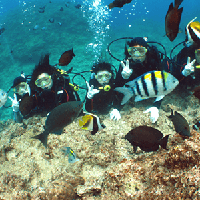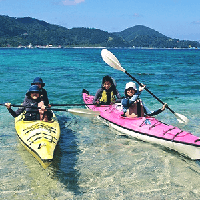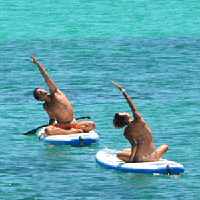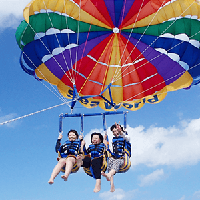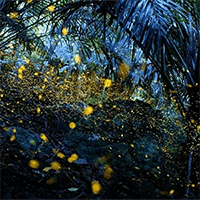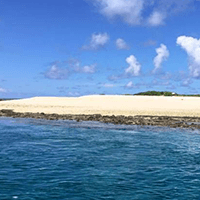- Age 7~Age 80
- Over 6 hours on the day
- 09:00
This is a day tour that walks around Tadanoumi, Takehara City. Tadanoumi is closely related to the name of Taira no Tadamori (the father of Taira no Kiyomori). After climbing Mt. Kurotaki with a guide and seeing the beauty of the many islands in the Seto Inland Sea like a diorama, you can enjoy seafood rice bowls topped with plenty of fresh fish. After Zen meditation and sutra copying at Shoun-ji Temple, you will tour the history of Kagi Castle and Tokoura Shrine, which are closely related to the Kobayakawa navy. ~ Flow of the day ~ 9:00 Meet at Takehara City Tadanoumi Port 2nd parking lot (in front of Aohata Jam Deck) 9:10 Kurotakiyama hiking 11:30 Ajidokoro Sunrise Lunch 13:30 Winning Zen meditation and sutra copying experience 15:00 Town walk 16:00 Takehara City Tadanoumi Port 2nd Parking Lot
- Age 10~Age 80
- 2~3 hours
- 10:00
This is a half-day sightseeing course that visits the historic Chozenji Temple in Takehara City, Hiroshima Prefecture, Aki's Little Kyoto. This is a plan that includes a taxi meeting at Takehara Station. The tour runs every Tuesday and Wednesday. After arriving at Chozenji Temple grounds, you will be welcomed with a Nembutsu prayer and a welcome drink by the chief priest, and then tour the Ishiyama Battle Memorial Hall within the grounds with commentary from the chief priest. Here, the flag of the Ishiyama Battle Army and the list of those killed in battle at Fort Amagasaki during the Battle of Ishiyama are preserved. This flag was used during the ``Battle of Ishiyama'' (1570-1580), a battle between Oda Nobunaga and his followers at Honganji Temple.At the request of the third chief priest Enzai, his followers, mainly members of the Fujiwara clan, organized Kihata-gumi, and along with the Mori army, they formed the Kihata-gumi. After setting sail and going to support Ishiyama, we will enjoy copying sutras in a vault overlooking a Japanese garden with the motif of ``heart.'' Afterwards, enjoy copying sutras in front of a beautiful Japanese garden. Sutra copying is a form of meditation. Meditation time will be a time to heal your everyday stress. Please enjoy authentic Chozenji Buddhist cuisine along with the beautiful garden and furniture. This is a special cuisine and space that can only be enjoyed here. ~Flow of the day~ 10:00 Gather at JR Takehara Station. Move to Chozenji. Sutra copying experience and visit to the Ishiyama Battle Memorial Museum, guided lunch at 11:30 AM Shojin Kaiseki cuisine while looking at the magnificent folding screen and Japanese garden After this course, you will have free time. We recommend a free stroll through the Takehara Old Townscape Preservation District. Takehara City (Hiroshima Prefecture) Townscape Preservation District, known as the Japan Heritage ``Takehara Old Townscape Preservation District'' and ``Aki's Little Kyoto'', has been designated as one of the top 100 cityscapes, and was also designated as a Japan Heritage Site in 2019. Ta. Takehara is said to have first been cultivated as a manor land for Shimogamo Shrine in Kyoto during the Heian period under the Private Property Law of Konta Eiten. During the Muromachi period, Mori Motonari's third son Takakage (who was adopted by the Kobayakawa family and became Takakage Kobayakawa) spent his childhood there. Takakage was one of the people who received the ``Three Arrows' teachings'' from Motonari and supported the Mori clan system. Later, in the late Edo period, it developed through salt fields and sake brewing, and it is said that it boasted an 80% share of Hiroshima prefecture's salt production at the time. There are three sake breweries: Taketsuru Sake Brewery, Fujii Sake Brewery, and Nakao Jozo. Masataka Taketsuru, the founder of Nikka Whiskey, known as the ``father of Japanese whisky,'' is from Takehara. Taketsuru Sake Brewery, Masataka's birthplace, still operates in the townscape preservation district to this day. Around this time when salt and sake were developing, Rai Sanyo, a Confucian scholar and author of ``Japanese Foreign History,'' which had a great influence on the patriots at the end of the Edo period, was active. The former home of Sanyo's grandfather, Kiyoshi Yoriyoshi, is located in the townscape preservation district. (Excerpt from the Japan Historical Travel Association) At the annual Takehara Longing Road, the town is beautifully illuminated with candlelight and bamboo lanterns set in the townscape preservation district. The atmosphere of the old house leaking through the lattice door is also very atmospheric, giving you the illusion of having traveled back in time.
- Age 18~Age 80
- 4~5 hours
- 09:00
This is a tour of the 600-year history of Ota City. Recommended for those who like history, mountain castles, temples and shrines. You can see what it was like 600 years ago. You can choose from two plans, the easy movement plan by car (movement by car) and the walking plan for walking around town (movement on foot).
- Age 10~Age 50
- 3~4 hours
- 10:00
"Enjoy the scenery of the UNESCO World Heritage Shirakami-Sanchi" Walk the mountains of Noshiro in full pilgrimage attire with Noen Haruharu, a guide from Ryusenji Temple! You can hear about history and faith from your guide, and about trees and flowers from Noen Haruharu. Experience Buddhism by walking through the mountain scenery of the four seasons. Pick seasonal wild vegetables, cook them yourself, and eat them. Enjoy seasonal wild vegetables with rice balls, pickles, and miso soup. At the end, there is a 15-minute Buddhist talk in English. ~Experience flow~ 9:00 Mountain hiking Content changes depending on the season Pick wild vegetables Take a break at the peak and drink Noen Haruharu's herbal tea Heart Sutra reading in the hall (reading sutras together) 12:00 Return to Ryusenji Temple Cook wild vegetables yourself Don't worry, we will prepare extra if there is not much to pick. Lunch is rice balls with wild vegetables, miso soup, and smoked daikon radish while looking at the Shirakami Mountains. You can listen to a 15-minute talk on Buddhism in English from the head priest. Until 13:00 Q&A We will answer any questions you may have.
- Age 5~Age 100
- 2~3 hours
- 11:00 / 14:00
Experience traditional ceremonies and meals at Kanda Myojin, which has a 1,300-year history as the guardian deity of Tokyo. The current building was rebuilt in 1934, and you can enter the precious building designated as a nationally registered tangible cultural property, and experience a ritual performed by Shinto priests and shrine maidens called Shoden Sanhai. After the ceremony, it is time for a meal called Naorai. This meal is also included in the traditional ceremony, and you can have a delicious meal while having a valuable experience.
- Age 7~Age 75
- 1~2 hours
- 11:00
[Walk with the guide and discover! Charm of Awaji ~Izanagi Jingu Course~】Izanagi Jingu, which enshrines two gods, Izanagi no Mikoto and Izanami no Mikoto, is said to be the oldest shrine in Japan, and appears in the Kojiki and Nihonshoki. Experience a special formal worship at the worship hall of Izanagi Jingu. Main course Meet at "Izanagi Jingu-mae" bus stop of "Awajin Awahime Bus" ⇒ Special formal worship at Izanagi Jingu ⇒ Stroll around Izanagi Jingu ⇒ End
- Age 18~Age 60
- 1 Day or more
- 09:30
We have you stay at temple in two days and one night. You can learn swordsmanship at a temple and Spiritual mission experience first place in the Japanese swordsmanship. Why don't you experience Japanese wasabi?
- Age 18~Age 99
- 3~4 hours
- 09:30 / 13:00
The spirit house of Sendai founder Masamune Date. It was destroyed by air strikes and rebuilt in Year. Why don't you experience a wedding photo in the kimono culture of Kimono and the commemoration of the two at Zuihoden, which is fascinating for its vibrant colors that convey the gorgeous Momoyama culture? Wedding photo package details ・ Photography fee ・ Cost of clothes (Basic is first wear) -Dressing & hair makeup costs ・ Shooting accessories ・ Accessories such as hair ornaments ・ Photo data (100 photos) The schedule is Dressing, hair makeup ~ about 2 hours Shooting ~ 1 hour Change of clothes-30 minutes It takes 3 and a half Time required.
- Age 7~
- 2~3 hours
- 09:00 / 10:00
[About suspension of guide reservations due to measures to prevent the spread of new coronavirus infection] Thank you for using our town walking guide on a regular basis. With the spread of the new coronavirus, Ryowa 2 Year we will suspend the acceptance of the guide book until September 30 (Wednesday). For reservations made after September 30, we will accept applications, but please note that we may rejected We appreciate your understanding and cooperation. Nagano City Guide Association We will explain the relationship between Zenkoji and the temples and shrines that surround Zenkoji.
- Age 7~
- 2~3 hours
- 09:00 / 10:00
[About suspension of guide reservations due to measures to prevent the spread of new coronavirus infection] Thank you for using our town walking guide on a regular basis. With the spread of the new coronavirus, Ryowa 2 Year we will suspend the acceptance of the guide book until September 30 (Wednesday). For reservations made after September 30, we will accept applications, but please note that we may rejected We appreciate your understanding and cooperation. There are many tours of the Seven Lucky Gods of the Nagano Japan, but the characteristic of the Seven Lucky Gods of Zenkoji is that they are composed of gods that have already been worshiped at ancient temples and shrines. The Seven Lucky Gods of this Monzen-cho, which has a history of more Year since the founding of Zenkoji, is sure to be beneficial. You can enjoy it alone or with friends, but each of them will visit temples and shrines that are said to have a long history, so please take a tour with your guide.
- Age 0~Age 100
- 2~3 hours /3~4 hours
- 10:00
Why don't you take a walk to experience Japanese culture with an interpreter in the historical city of Hakata, Fukuoka? *Interpretation is available in English. Contents of the course: ★Assemble in front of the Hakata Station/Hakata Exit elevator A staff member with a small flag will be waiting for you. ↓★F Gallery (exhibition of buried cultural properties) (approximately 10 minutes)↓★Hakata Chakura (approximately 40 minutes)↓★Grave of Shakokumei (approximately 10 minutes)↓★Wakahachimangu Shrine (approximately 15 minutes)↓★Hakata Sennenmon (Approx. 10 minutes) ↓★Jotenji Temple (Approx. 30 minutes)↓★Tochoji Temple (Approx. 40 minutes)↓ Mochikichi (Approx. 15 minutes)
最近チェックしたプラン
Please wait a moment
![[Hiroshima/Takehara City] A trip to experience history and nature "Tadanoumi History Exploration Course" View of Setouchi from Mt. Kurotaki and delicious Setouchi seafoodの画像](https://img.activityjapan.com/10/45710/10000004571001_zupYFKe4_3.jpeg?version=1671709682)
![[Hiroshima/Takehara City] [Meal and taxi included plan] Aki's Little Kyoto "Chozenji and History" Have a special time with beautiful temples and delicious vegetarian cuisine!の画像](https://img.activityjapan.com/10/45708/10000004570801_zupYFKe4_3.JPG?version=1702712583)
![[Gunma / Ota] History Hunter-Around History of Ota City-の画像](https://img.activityjapan.com/10/39742/10000003974201_nbu8UPZS_3.jpeg?version=1638924544)
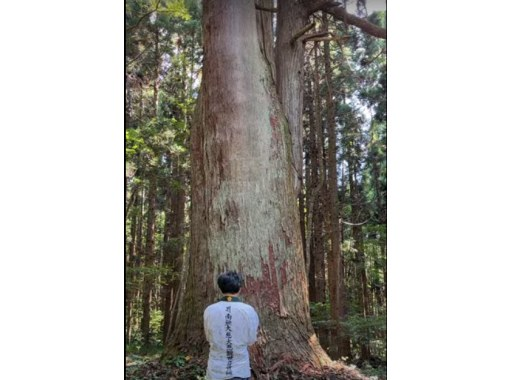
![[Tokyo Akihabara] You can have a valuable experience in the back of a historic shrine in the center of Tokyo! Meal planの画像](https://img.activityjapan.com/10/50076/10000005007601_atFOJjl6_3.jpg?version=1691374562)
![[Hyogo Prefecture Awaji Island] Experience formal worship at Japan's oldest shrine "Izanagi Jingu" Spend a special time sharpening your sensesの画像](https://img.activityjapan.com/10/46911/10000004691101_AHkjA21Z_3.JPG?version=1678360622)
![[Osaka/ Sennan City] Staying at a temple for 2 days and 1 night, experience swordsmanship-enjoy Japanese wabi sabi! (With a shuttle bus)の画像](https://img.activityjapan.com/10/30621/10000003062101_45q1HsdU_3.jpg?version=1574990631)
![[Sendai City, Miyagi Prefecture] Wedding photo plan at the spirit house "Zuien-don" where the Sendai lord Masamune Date sleepsの画像](https://img.activityjapan.com/10/30199/10000003019901_oeqd7MEH_3.jpg?version=1572503672)
![[Nagano / Nagano City] Sightseeing guide tour! Visiting temples and shrines related to Zenkojiの画像](https://img.activityjapan.com/10/21253/10000002125301_LSriJeUi_3.jpg?version=1596589401)
![[Nagano / Nagano City] Sightseeing guide tour! There is definitely benefit! Visiting Zenko-ji Shichifukujinの画像](https://img.activityjapan.com/10/21252/10000002125201_b30flY3B_3.jpg?version=1596589430)
![[Fukuoka/ Hakata] Hanging out in Fukuoka "Hakata temple tour course" 3 hours of walking around Hakata! English available!の画像](https://img.activityjapan.com/10/18044/10000001804401_cU5xoPC2_3.jpg?version=1667358782)

